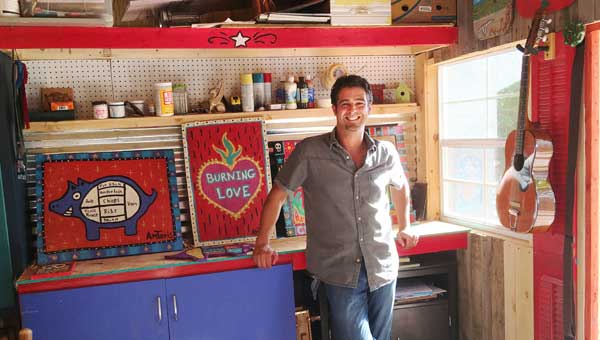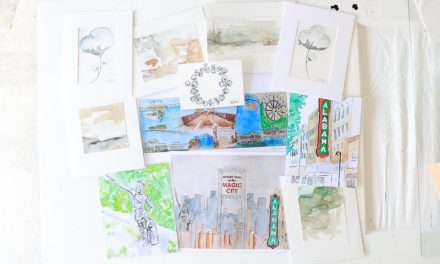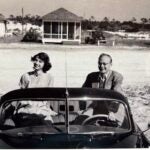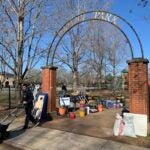Doug Baulos leads workshops focused on natural materials
Story and Photos By Laura Brookhart
For a group of quilters and fiber artists, a springtime workshop taught by Doug Baulos was an inspirational introduction to methods to create their own distinctively hued fabrics.
Primarily focusing on dyeing with natural materials, Baulos led the group through several techniques.
“In my role as programs chair with the Evening Star Quilt Guild, my goal this year has been to encourage guild members to try something new…to step outside their comfort zones and try a different style, technique, tool or method,” says Shirley Hamilton.
She first met Baulos in 2014 during Magic Chromacity, which is a community art project and installation.
“Doug led an indigo dyeing workshop, and the resulting fabric was incorporated into two huge patchwork quilts sewn during community sewing days,” Hamilton says.
They draped the stunning quilts on two buildings on the UAB campus.
“As much as I loved the indigo dyeing process at the recent workshop, I was amazed when I saw the sun prints using leaves, lace and stencils.” Hamilton says. “Each of the five separate techniques of dyeing we learned during the workshop was my favorite – until I did the next.”
With a silkscreen frame, Baulos first demonstrated “charging” the open area with a product called Color Magnet Dye Attractant. When the silkscreen is laid atop the cotton fabric and squeegeed, the stenciled design is transferred. This intensifies the color when next dipped into the natural dye.
Another project experimented with sandwiching eucalyptus leaves and branches in yardage that was wrapped tightly with string and then steamed to imprint leafy abstractions into the fabric. The colors produced were colorfast reds, oranges and coppers with some pale green areas.
Some natural dyes, such as onions, red cabbage and beets, are called fugitive dyes, as they will gradually fade and disappear after seven years. This is not the case with indigo (a range of beautiful traditional blues) or walnut.
Baulos prepared a large vat of natural indigo, added alum, then showed how the immersed fabrics may be selectively dipped in parts. The twisting and tying techniques used to prepare the fabric or T-shirts brought by some participants were similar to tie-dye.
The fabrics initially emerged in green hues, but afterwards when hung on the clothesline, one could watch the transformation (oxidation process) from bright green to indigo. The desired effect is finally rinsed with water or textile detergent.
Baulos, BFA MFA, is assistant professor at The University of Alabama at Birmingham. His drawings, poems and books have been exhibited and published both nationally and internationally. His current books are explorations (visual) and meditations (poetry) centering on his ideas of spirituality, love, death, shelter and hope.
Currently on the UAB campus, Baulos is planting a dye and paper garden where indigo, madder, woad and eucalyptus will be growing, as well as several species of lilies for paper fiber.











